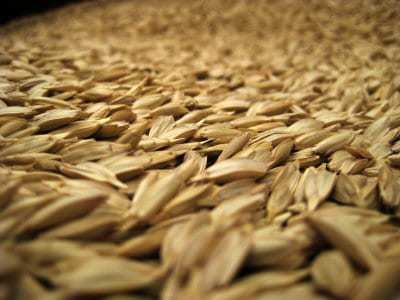Emmer Seeds (photo www.prairieheritagefarm.com)
Ancient Grains: Getting Lots of Modern Attention
Ancient wheat grains, as implied by the name, refers to genetic types of wheat grasses that were available several thousands of years ago. My own culinary training taught me that they were all ‘cousins’ of our modern wheat, like durum and winter wheat, used commonly in pasta and baking. However, my investigation into the wheat family’s lineage actually points to Einkorn and Emmer (the proper name for farro) as being the parents rather than cousins. Einkorn is referred to as “Mother Wheat” in academic literature and its parental role is still uncertain, but what is known about this lineage helps us understand why these varieties of grain might have nutritional benefit to us today.
Differences in the Basic Structure of Ancient Wheat Grains vs. Modern Wheat
Protein Structure (this becomes important for digestibility):
- Einkorn, Emmer, and Spelt all have variations in their gliadin to glutenin ratios compared to modern wheat varieties.
- Gliadin and glutenin are two of the ‘peptides’ that form the protein complex in wheat called ‘gluten’.
- These individual peptides are what can cause various reactions in the small intestine and create discomfort during digestion for individuals with sensitivities.
- Einkorn is lower in some specific gliadins than modern wheat so has been reported to be more digestible by certain individuals.
- Emmer and spelt are missing some gliadins that might also make them more tolerable.
Nutritional Composition:
- Einkorn, Emmer, and Spelt do have higher lipid, protein, fiber, and mineral content than modern wheat varieties; however, these differences can be as close as only a few percentage points depending on which varieties of each grain are actually compared. (source: U of M Extensions)
- Ancient wheat grains do have the antioxidant and lignan properties of other whole grains making them beneficial for cardiovascular health, cancer prevention, and childhood asthma.
Key Take-Aways:
- Ancient wheat grains are all still types of wheat and do contain ‘gluten’; however, variations in structure could make them more digestible for certain non-celiac individuals with issues of tolerance.
- Ancient wheat grains are nutrient-rich sources of carbohydrate and can offer great variety in taste and texture, in the right portions, to your meal plan.
- Ancient wheat grains don’t need to replace your other whole grains; the form and amount that you eat grains in, at the end of the day, are still the most important considerations. Whole, minimally processed forms, ideally whole grain berries and grouts that you cook like rice, offer the most nutritional benefit in the right portions (1 carbohydrate serving= 1/3 cup cooked).
You have to exercise caution with any packaged grain products – even when made with ancient grains – because grains often come with sugar and other added ingredients to make sure you like the flavor. This leads to over-consumption of both whole and processed hybrid grains, and that’s when grains become problematic. Those ‘common’ whole wheat berries in the bulk bin, that taste lovely when cooked with home-made stock, are becoming just as ancient in most modern kitchens as Einkorn. Start where you can, if you need variety from quinoa, enjoy Einkorn or Emmer. If you don’t know what quinoa is or when the last time was that you made home-made grains of any variety, start there – that step is ultimately what is nutritionally better. Warmly, Teri Rose, CARE Nutritionist and Program Director




thank you. this information is very helpful. thank you very much